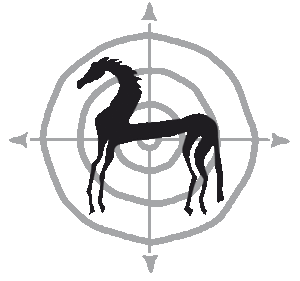
Barefoot horses – why bother? And how can we make it work?
I used to think that people who kept their horses without shoes were crazy.
Some of them didn’t even have their horse in a stable…
How could they do all this to their poor, poor horse?
And they couldn’t be ‘serious’ riders, for sure!
Fast forward to today.
All my horses are barefoot.
They live ‘outside’ all year long (yep, even in Norway).
And to top it off: I work as a barefoot hoof care specialist.
How and why I changed my mind is a long story – let’s save it for another day.
But I can give you a short overview of what I learned along the way.
Barefoot is healthier – that is nothing new…
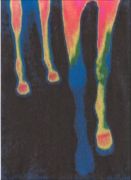
Shoeing can impact circulation in the hoof – and the leg
Using your horse without shoes startet getting a lot of attention around the year 2000.
It might seem like some New Age ‘trend’.
However, the idea that it is healthier to keep your horse barefoot is nothing new.
Many books on farriery (horseshoeing) and horse health, from the very old to the very recent, say the same thing: it would be great if we could keep our horses barefoot. Because horse hooves and iron shoes are not a very healthy combination.
Just some of the reasons why
- A healthy hoof spreads a bit when a horse puts it weight on it. This is called hoof mechanism.
Shoeing reduces hoof mechanism.
- Reduced hoof mechanism means less blood circulation in the hoof. It is basic biological knowledge that good blood circulation is necessary for tissue health (just think of frozen toes that turn black and fall off…).
Therefore barefoot horses often have better hoof health. - Shoes mean less hoof mechanism. And that means less shock absorption. A horse with shoes that walks on asphalt, receives about 2 to 3 times the impact force of a barefoot horse that trots on asphalt.
Just imagine what happens when a shod horse is used on hard surfaces, in high speeds or for jumping… - Would you go running in ski boots? That would not only damage your feet, but also your body higher-up. Such as your knees and hips.
The same thing applies to horses with shoes. Shoeing not only has a negative effect on the hooves. But also on the bones and tendons higher up in the leg. And even shoulders, hips and backs. Just think about problems such as navicular syndrome, sidebone (calcifications) and tendon problems. - Especially in heavier horses/larger hooves, the hoof will still move. Even when (partly) nailed to a shoe. This can cause hoof cracks.
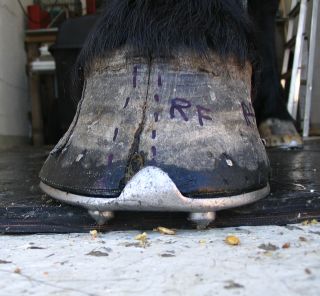
Shod horse with large crack (all the way into coronet band), side cracks, and bad hoof quality
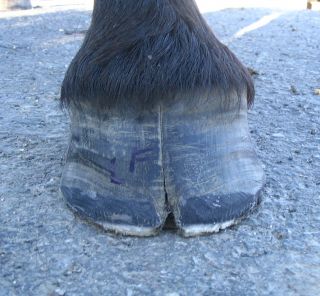
Same hoof without shoe – healthy new hoof is growing in, crack is stabilizing (it may never fully close again)
- Lack of blood circulation also means the nerves in the hoof cannot work properly anymore. (This is one of the reasons why many horses suddenly go lame when they lose a shoe: circulation – and nerve function – are restored.)
In that way you can almost compare shoes to painkillers. But do we want to use a horse that has limited or no feeling in its hooves…?
- A hoof spreads when the horse puts weight on it. This means that the hoof is in its narrowest state when it is lifted.
Since you can only shoe a horse when it is not standing on its foot (!), the hoof is always shod in its narrowest state. Over time this makes the hoof narrower and narrower (contracted). This means everything inside the hoof gets squeezed together.
Unfortunately nowadays contracted hooves are so common that many people consider them ‘normal’. - Horses with shoes have – and are! – a much greater injury risk. Noth only when they strike into themselves or pull off a shoe. But also to other horses, and to humans.
And even to the fields and roads they move on.
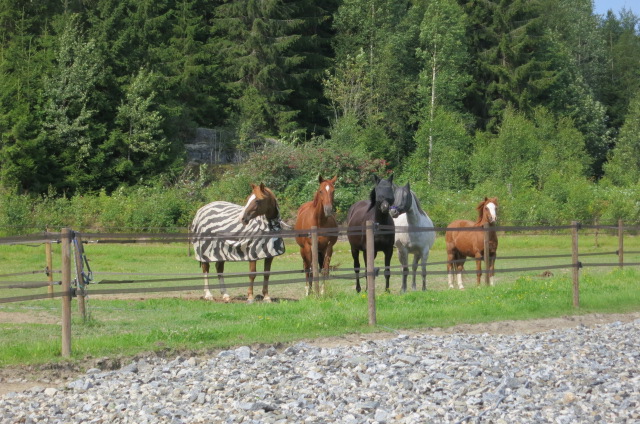
Horses love being together – and that’s a lot easier if they don’t have shoes on
….but how can I use my horse without shoes?!
So, what can we do to keep our horses barefoot – and still be able to use them for what we want?
- Just taking the shoes off is not enough! Many factors can influence hoof health. Such as which breed your horse is, the food it eats and the terrain it goes on.
- It’s a good idea to discuss any change in hoof care with your vet first. Especially if your horse already has some issues. You can also maybe get a second opinion from a veterinarian who specializes in hooves.
- Pick the right time. Especially if your horse is shod already. Maybe it’s not a good idea to take the shoes off just before a big competition, if your horse had shoes its whole life?
- It is very important that the hooves are trimmed the correct way. A barefoot horse that is not correctly trimmed can easily have the same problems as a horse with shoes (such as no hoof mechanism, hoof cracks, separations, white line disease, navicular disease, founder etc.).
Find an experienced hoof care professional to help you. Either a ‘barehoof’ specialist, or a farrier who has experience with barefoot horses.
Maybe you know other people with barefoot horses who can recommend somebody? - Hoof boots can be an enormous help. (That’s also nothing new; the Romans already designed a kind of hoof boot, the ‘hipposandal’.)
In the last 20 years there has been an explosive growth in the types of hoof boots on the market. Which makes it a lot easier to find something that works for your horse – and for you.
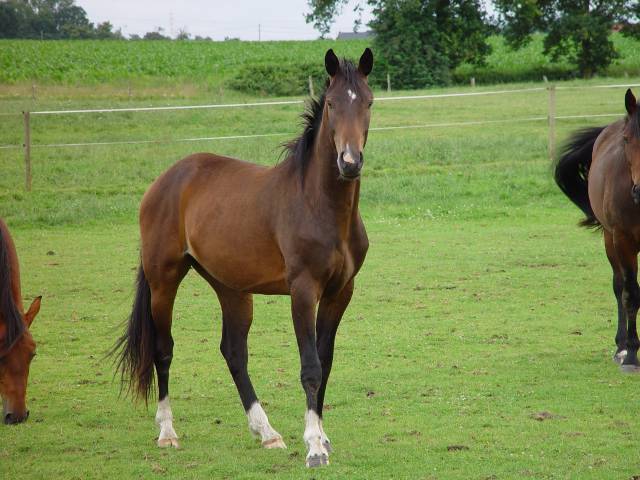
Whatever your choice – listen to your horse!
The golden question – whatever your choice
There are a lot of horses that have shoes on today, that would benefit from going barefoot.
But with horses as with humans – there will never be ‘one solution that solves all problems’.
Whatever choice you make for your horse’s hoof care, there is always one question you should ask. And that question is:
How are my horse’s hooves developing OVER TIME?
Do they look better now than they did half a year ago? Or a year ago?
Are any problems improving? Or getting worse?
What about hoof quality and hoof growth speed? Cracks, separations, thrush?
And what about how your horse moves?
Is he getting harder to ride?
Not as smooth in the turns as he used to be?
Less willing to go forward, or to extend the trot?
Or getting hotter?
Refusing jumps?
Listening to your horse will be the best hoof care decision you ever make!
